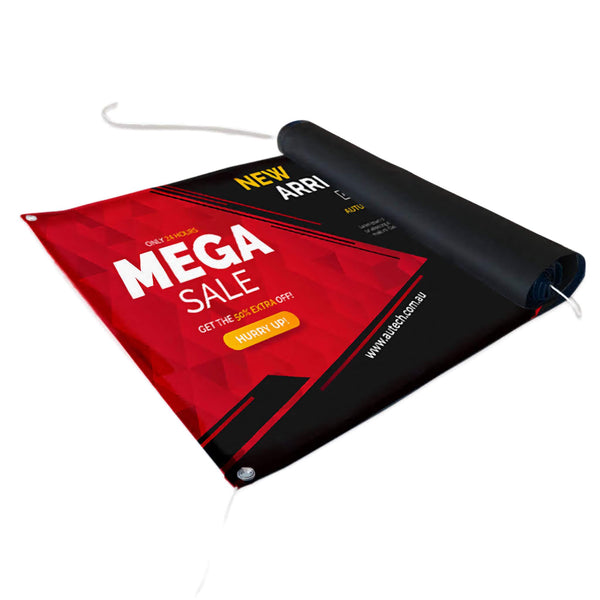Thinking of starting a printing business?

What is a goal for a printing company?
A goal for a printing company could be to increase profits, expand their customer base, improve efficiency, or enhance the quality of their products. It could also be to become a leader in a particular niche, such as sustainable printing practices or specialized printing services. Ultimately, the specific goals of a printing company will depend on the needs and objectives of the business.
What are the benefits of printing services?
Printing services offer a number of benefits, including the ability to produce professional-quality documents and marketing materials, the convenience of not having to maintain your own printing equipment, and the option to have someone else handle the printing process so you can focus on other aspects of your business. Printing services can also provide a range of finishing and binding options, as well as the ability to handle large volumes of prints efficiently. Additionally, many printing services offer design services and can help you create custom documents that meet your specific needs and brand guidelines.
Who is the target market for a printing company?
A printing company typically has a wide range of customers, including individuals, small businesses, and large corporations. The target market for a printing company will depend on the specific products and services that it offers. For example, a printing company that specializes in printing marketing materials such as brochures, business cards, and postcards may target small businesses, while a printing company that offers large-format printing services such as banners and trade show graphics may target corporations or event planners. Other potential customers for a printing company could include schools, non-profit organizations, and government agencies.
How can I succeed in printing business?
There are several steps you can take to succeed in the printing business:
- Define your target market: Identify your target customers and their needs. This will help you tailor your products and services to meet their specific requirements.
- Invest in quality equipment: Investing in high-quality printing equipment will not only increase the efficiency of your operations, but it will also enable you to produce professional-grade products that will appeal to your target market.
- Offer a wide range of products and services: In addition to traditional printing services, consider offering design services, direct mail campaigns, and large format printing to meet the needs of a diverse customer base.
- Build a strong online presence: Having a website and being active on social media can help you reach a wider audience and showcase your products and services.
- Foster relationships with clients: Building strong relationships with your clients is key to success in the printing industry. Make sure to consistently deliver high-quality products and excellent customer service to foster long-term relationships.
- Stay up-to-date with industry trends: Keeping abreast of industry trends and emerging technologies can help you stay competitive and offer cutting-edge products and services to your customers.
What are printing skills?
Printing skills refer to the ability to produce written or typed documents using a printing device such as a printer or a typewriter. This can include both mechanical and digital printing processes. Printing skills may also refer to the ability to set up and troubleshoot printing equipment, as well as to prepare documents for printing by formatting and laying out text and images in a way that is clear and visually appealing. Good printing skills can be important for producing professional-quality documents in a variety of settings, including office, school, and personal use.
What are the 3 main printing processes?
There are many printing processes, but the three main ones are offset printing, digital printing, and screen printing.
Offset printing is a traditional printing method in which ink is transferred from a metal plate to a rubber roller and then onto the printing surface. It is a high-volume printing process that is suitable for printing on a wide range of materials, including paper, cardboard, and plastic.
Digital printing is a more recent printing technology that uses digital files, such as PDFs or JPEGs, to produce prints. It is a low-volume printing process that is suitable for printing on a wide range of materials, including paper, cardboard, and fabric. Digital printing is often used for short runs of print materials because it is faster and more cost-effective than offset printing for small quantities.
Screen printing is a printing process in which ink is forced through a fine mesh screen onto the printing surface. It is a high-volume printing process that is suitable for printing on a wide range of materials, including paper, cardboard, and fabric. Screen printing is often used for printing T-shirts and other garments, as well as for printing promotional items such as mugs and pens.
What are the 7 steps of printing?
Here are seven common steps involved in the printing process:
- Pre-press: This includes preparing the file for printing, such as converting it to the proper format, proofreading, and making any necessary edits.
- Pre-flight check: This is a final check to ensure that the file is ready for printing and to catch any last-minute issues.
- Printing plate creation: Printing plates are typically made of metal or plastic and are used to transfer ink onto the printing surface. The plates are created using a process called "platemaking," which involves exposing a light-sensitive material to a high-resolution image of the artwork.
- Press setup: This involves preparing the printing press for the job, including installing the printing plates, adjusting the ink and rollers, and making test prints to ensure that everything is properly aligned.
- Printing: The actual printing process involves transferring the ink from the printing plates to the printing surface using the printing press.
- Finishing: This includes any additional processes that are needed to complete the job, such as cutting, folding, or binding the printed materials.
- Quality control: A final check is done to ensure that the printed materials meet the required specifications and are free of any defects.
What is the most common printing method?
The most common printing method is probably offset printing. This is a printing method in which the image is transferred from a printing plate to a rubber blanket and then to the printing surface. Offset printing is used for high-volume printing, such as newspapers, magazines, and books, and it is also the most cost-effective printing method for large runs. Other common printing methods include digital printing, screen printing, and flexography.
What is the nature of the printing business?
The printing business involves creating physical copies of documents or other materials using printing equipment such as printers, presses, and copiers. The materials that are printed can include books, newspapers, brochures, business cards, packaging, and other promotional materials. Printing businesses may offer a range of services, such as design, pre-press, printing, and finishing, depending on the needs of their customers. They may serve a variety of industries, such as publishing, marketing, and advertising. Some printing businesses may focus on a particular type of printing, such as digital printing or offset printing, while others may offer a variety of printing methods.
What are the challenges in the printing industry?
There are several challenges facing the printing industry today, including:
- Declining demand for print: With the rise of digital media, there is a declining demand for print materials such as newspapers, magazines, and marketing materials.
- Increasing competition: The printing industry is highly competitive, with many companies offering similar services. This can make it difficult for individual companies to stand out and attract customers.
- Rising production costs: The cost of raw materials and energy needed for printing can be expensive, and these costs are often passed on to customers.
- Technological changes: The printing industry is constantly evolving with new technologies being developed and adopted. Companies need to keep up with these changes in order to remain competitive, which can be costly.
- Environmental concerns: There are environmental concerns surrounding the printing industry, including the use of harmful chemicals and the generation of large amounts of waste. Companies are under pressure to reduce their environmental impact and adopt sustainable practices.
What do you need for a printing business?
To start a printing business, you will need the following:
- Printing equipment: You will need to invest in printing equipment such as a printing press, paper cutter, guillotine, folding machine, and other tools and machinery.
- Materials: You will need a supply of printing materials such as paper, ink, and toner.
- Graphics design software: You will need graphics design software such as Adobe Creative Suite or CorelDRAW to create designs for your clients.
- Website: A website is important for promoting your business and attracting new clients.
- Marketing materials: You will need marketing materials such as business cards, flyers, and brochures to promote your business.
- A business plan: A business plan will help you map out the specifics of your business and set goals for the future.
- Funding: You will need to secure funding to cover the costs of starting your business, such as purchasing equipment and materials. This can be done through a bank loan, investment from partners or investors, or using personal savings.
- Business licenses and permits: You will need to obtain the necessary licenses and permits to operate your business in your location.
- Insurance: It is important to have insurance to protect your business and employees in case of accidents or other unforeseen events.
Is printing a good business?
Printing can be a good business, depending on several factors such as the demand for printing services in the area where the business is located, the quality of the products and services offered, the efficiency of the production process, and the effectiveness of the marketing and sales efforts. It is important for a printing business to have a clear understanding of its target market and to offer products and services that meet the needs and preferences of its customers. In addition, the business should have a reliable and efficient production process, as well as effective marketing and sales strategies to attract and retain customers.
Start your printing business as a reseller of vividads.com.au
To sign up as a reseller on vividads.com.au, follow these steps:
- Visit the website and click on the "Reseller Sign Up" button on the homepage.
- Fill out the form with your personal and business information. This includes your name, contact information, business name, and billing address.
- Agree to the terms and conditions and click the "Sign Up" button.
- Wait for a representative from Vivid Ads to contact you to confirm your account and provide further instructions on how to access the reseller portal.
- Once your account has been approved, you will be able to log in and start purchasing and reselling Vivid Ads products to your clients.



